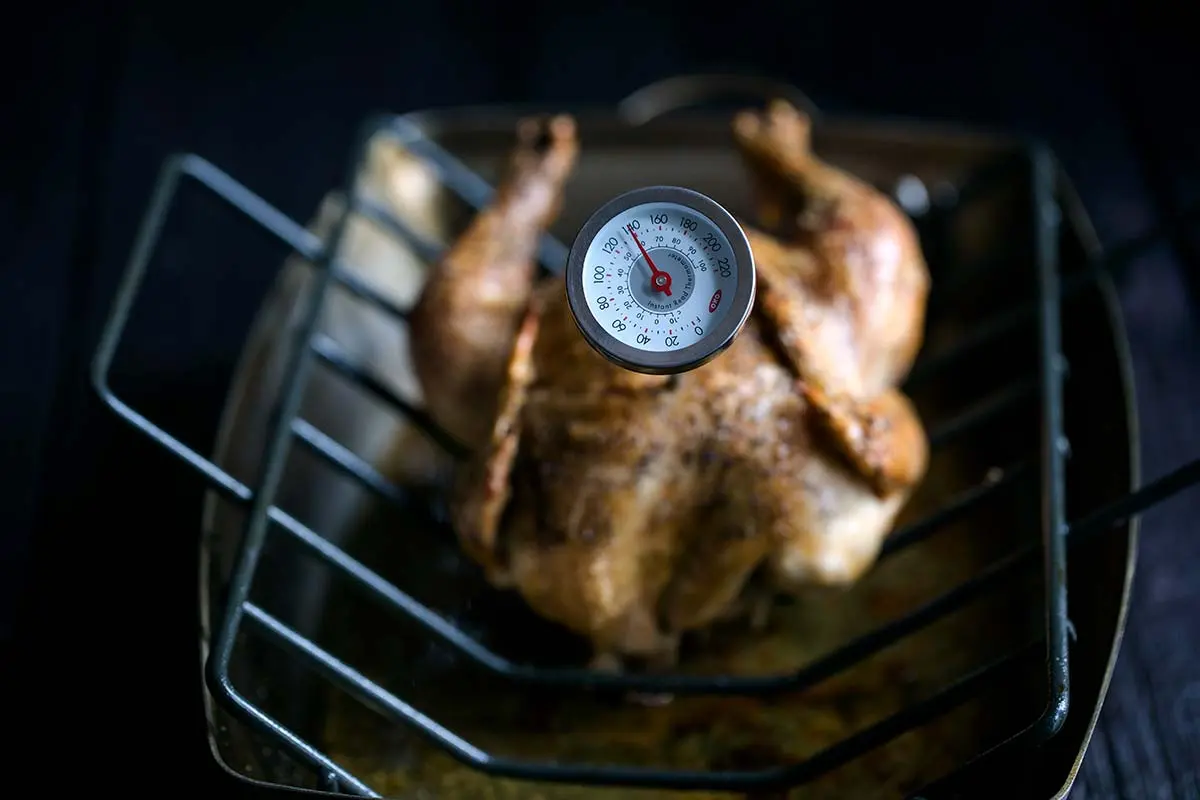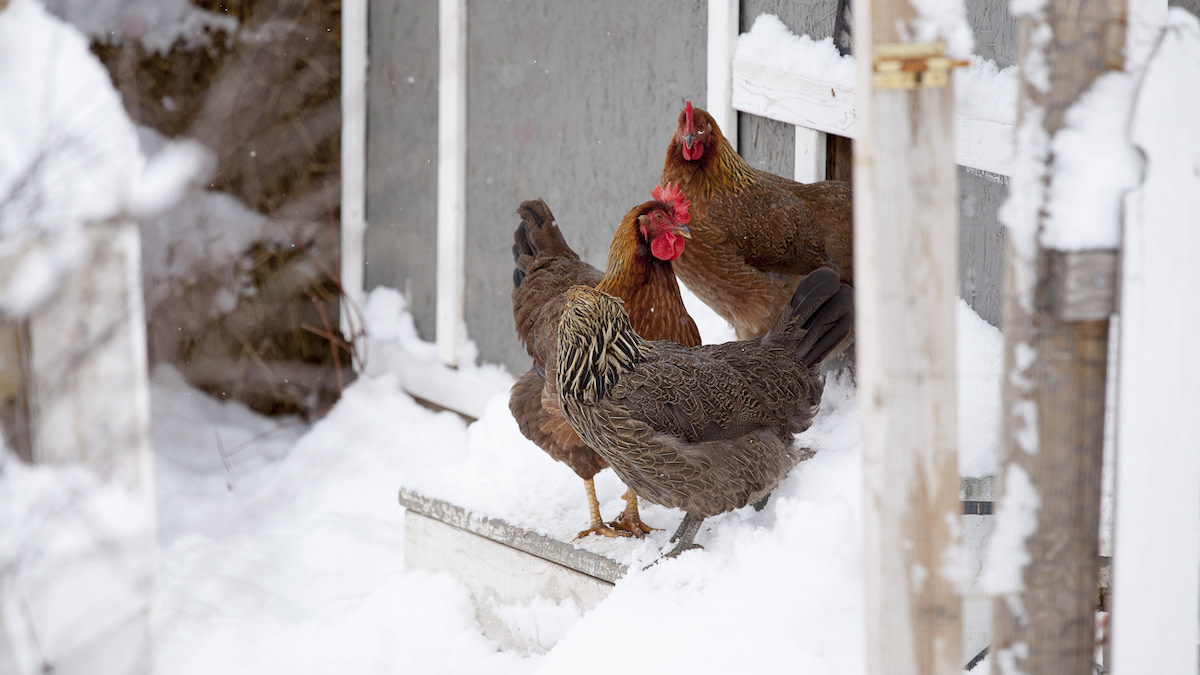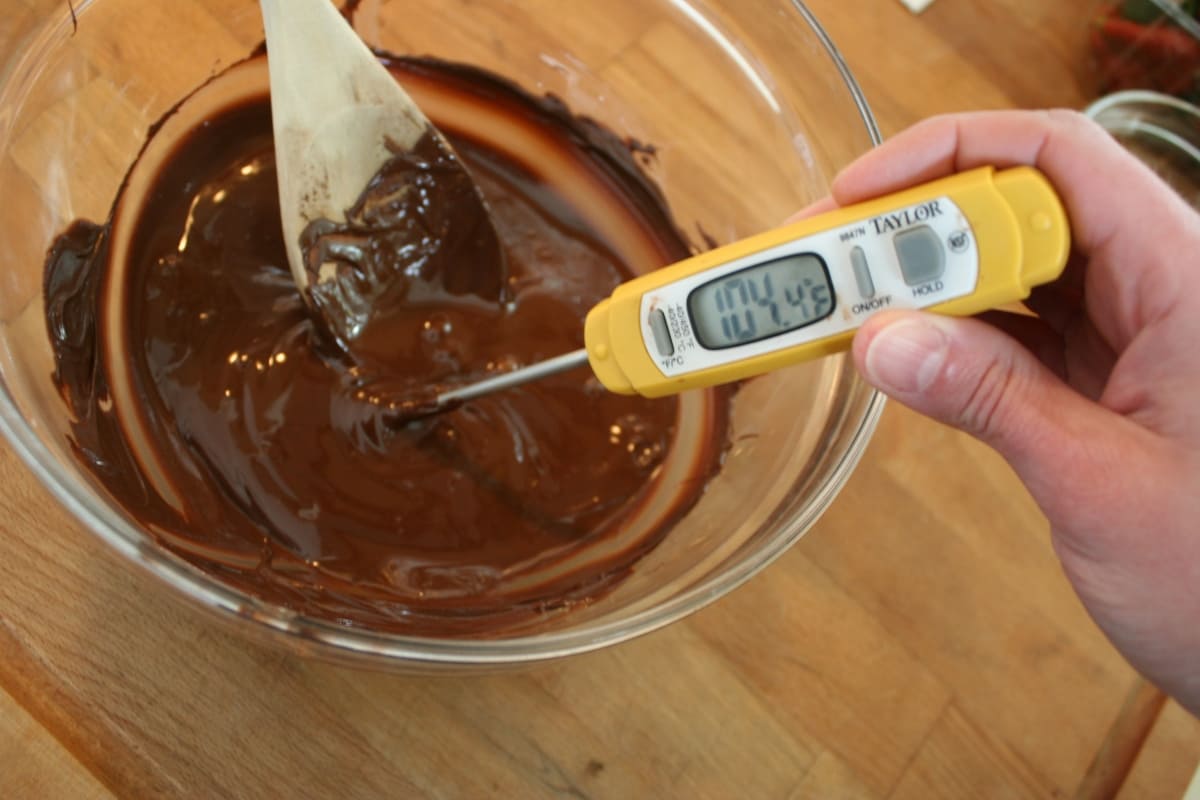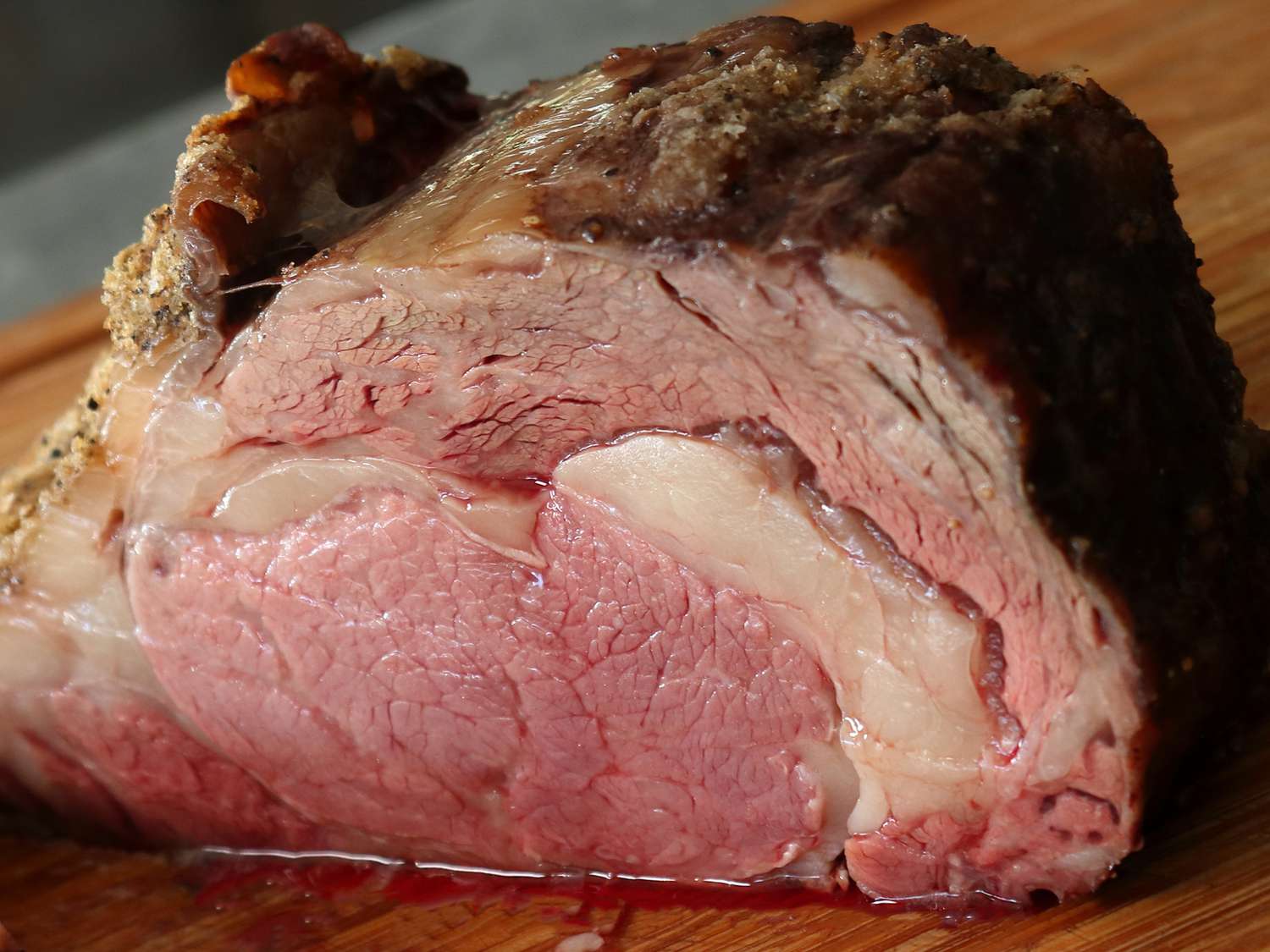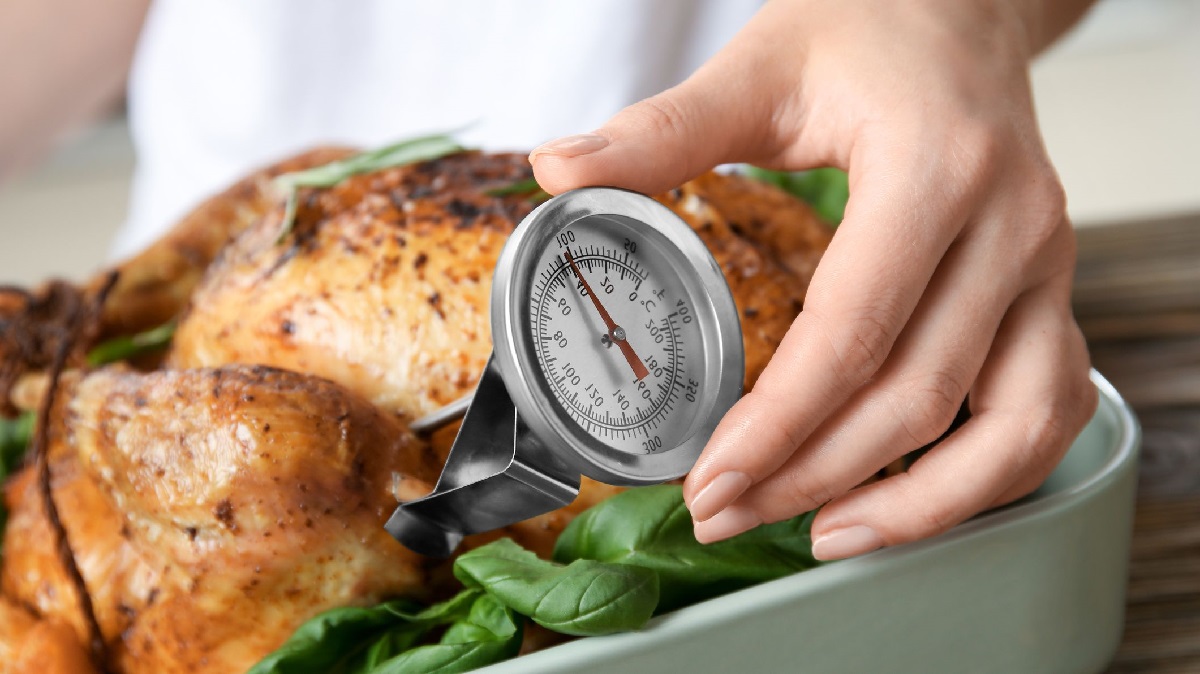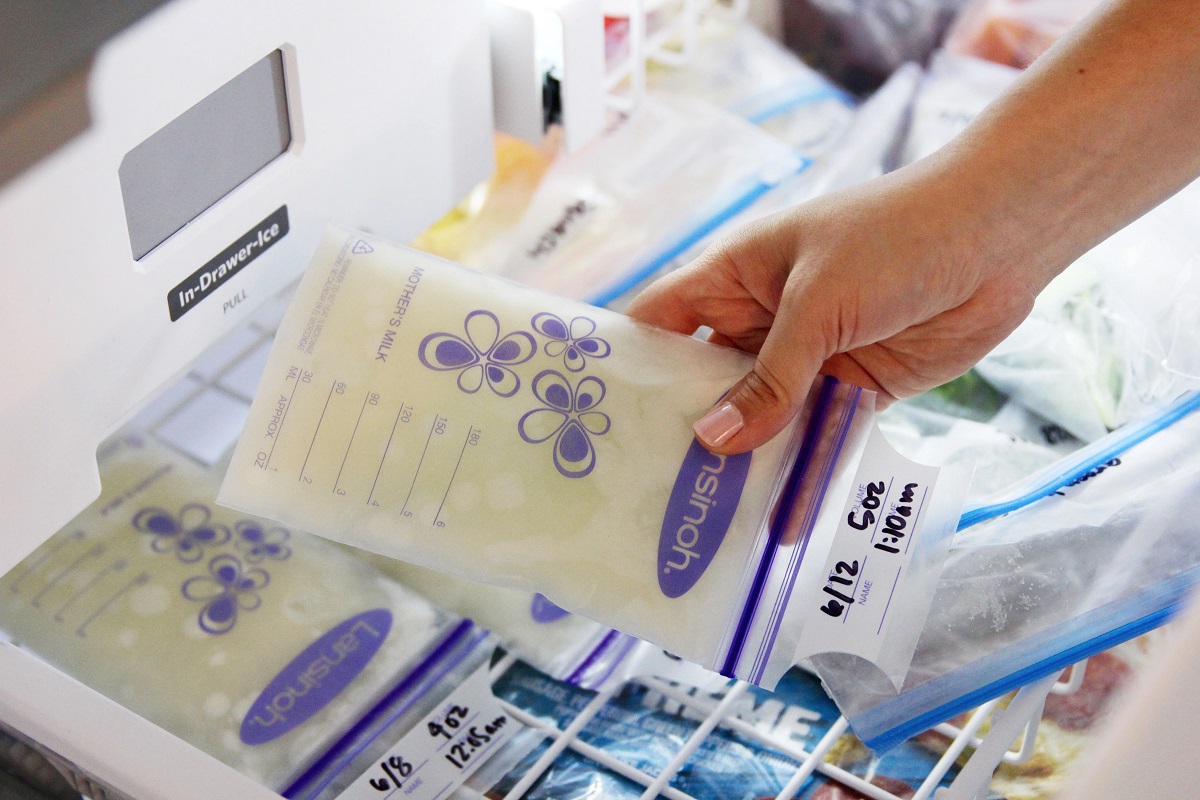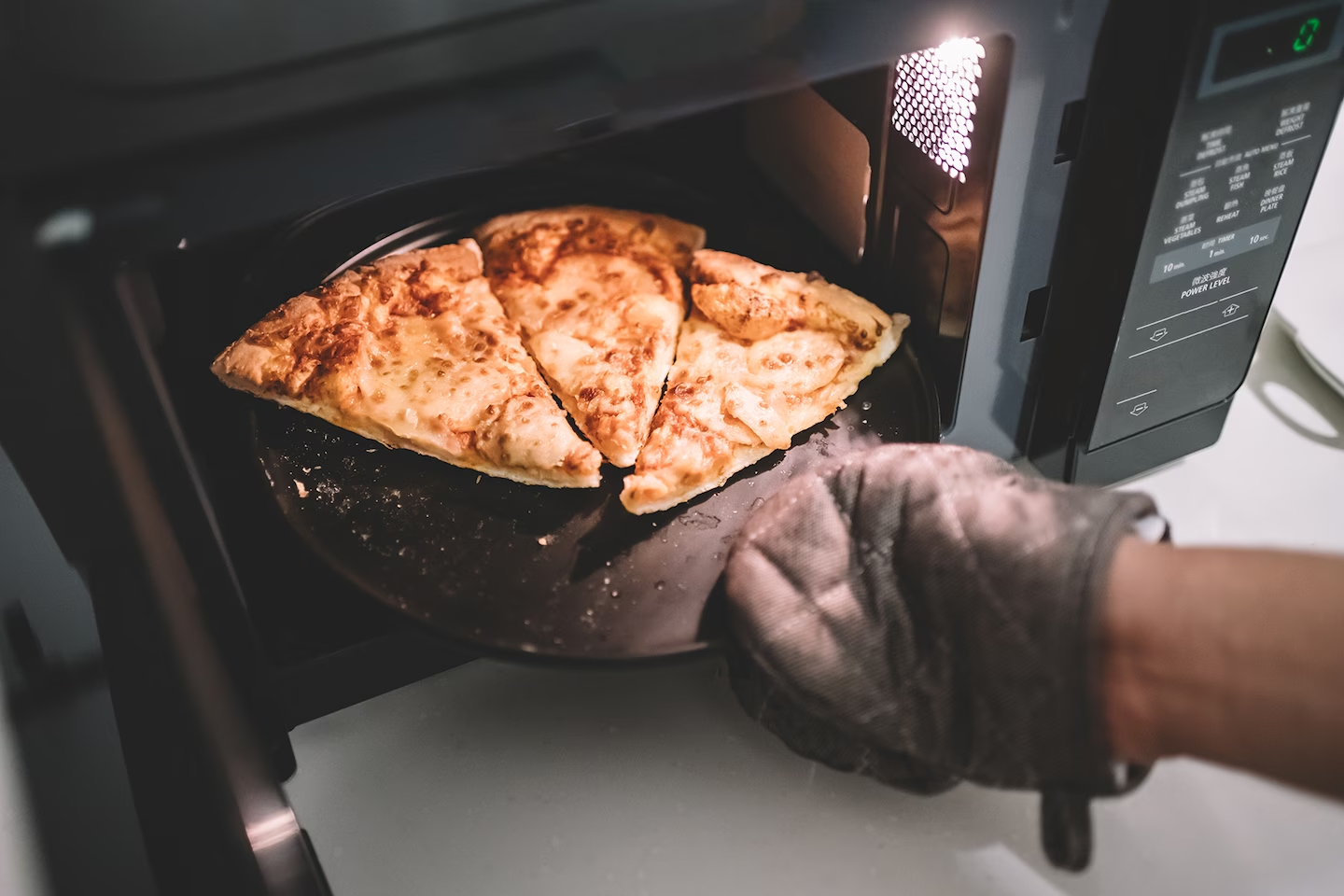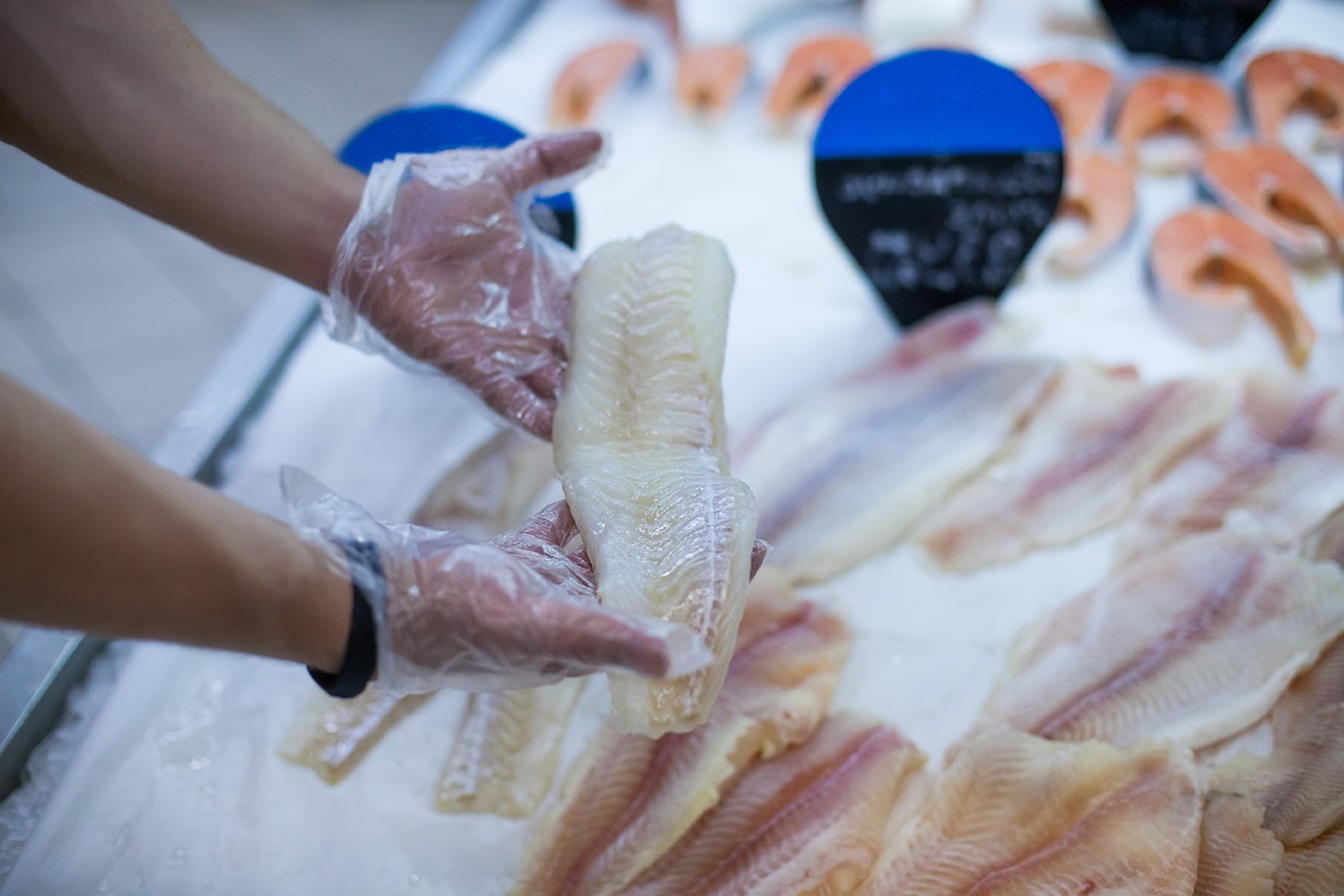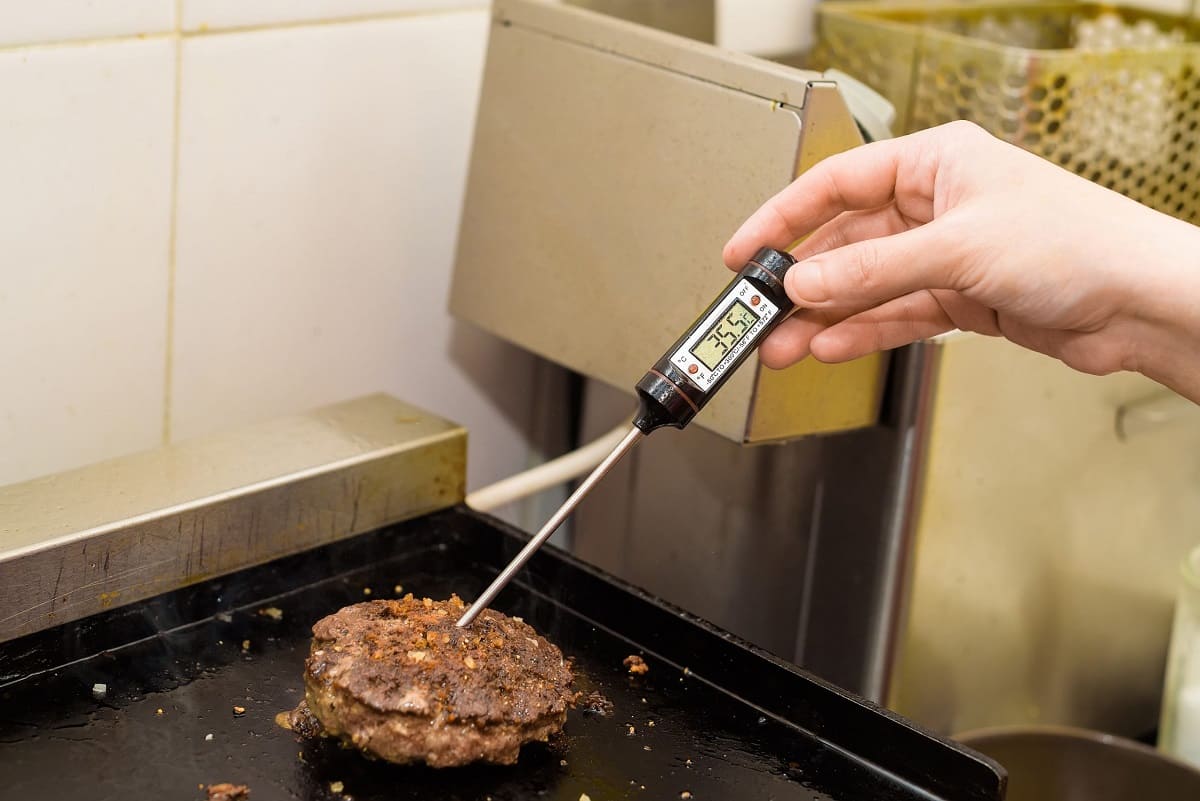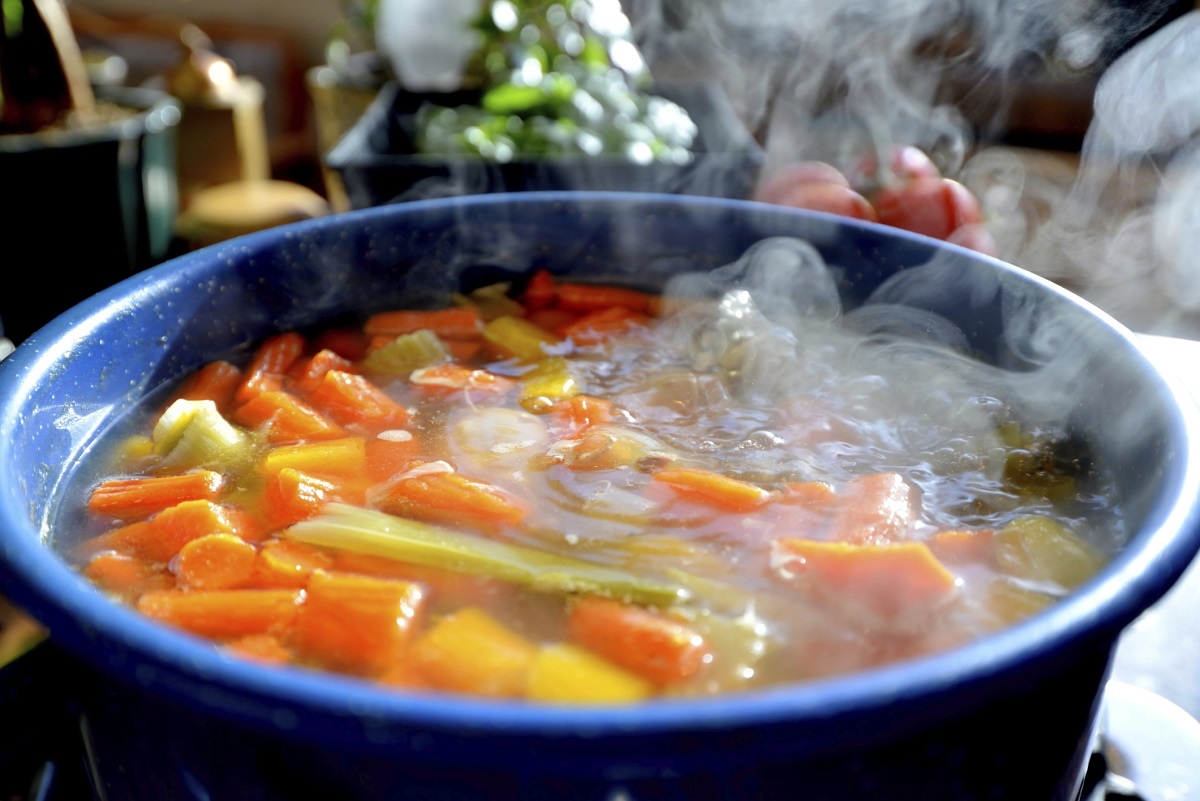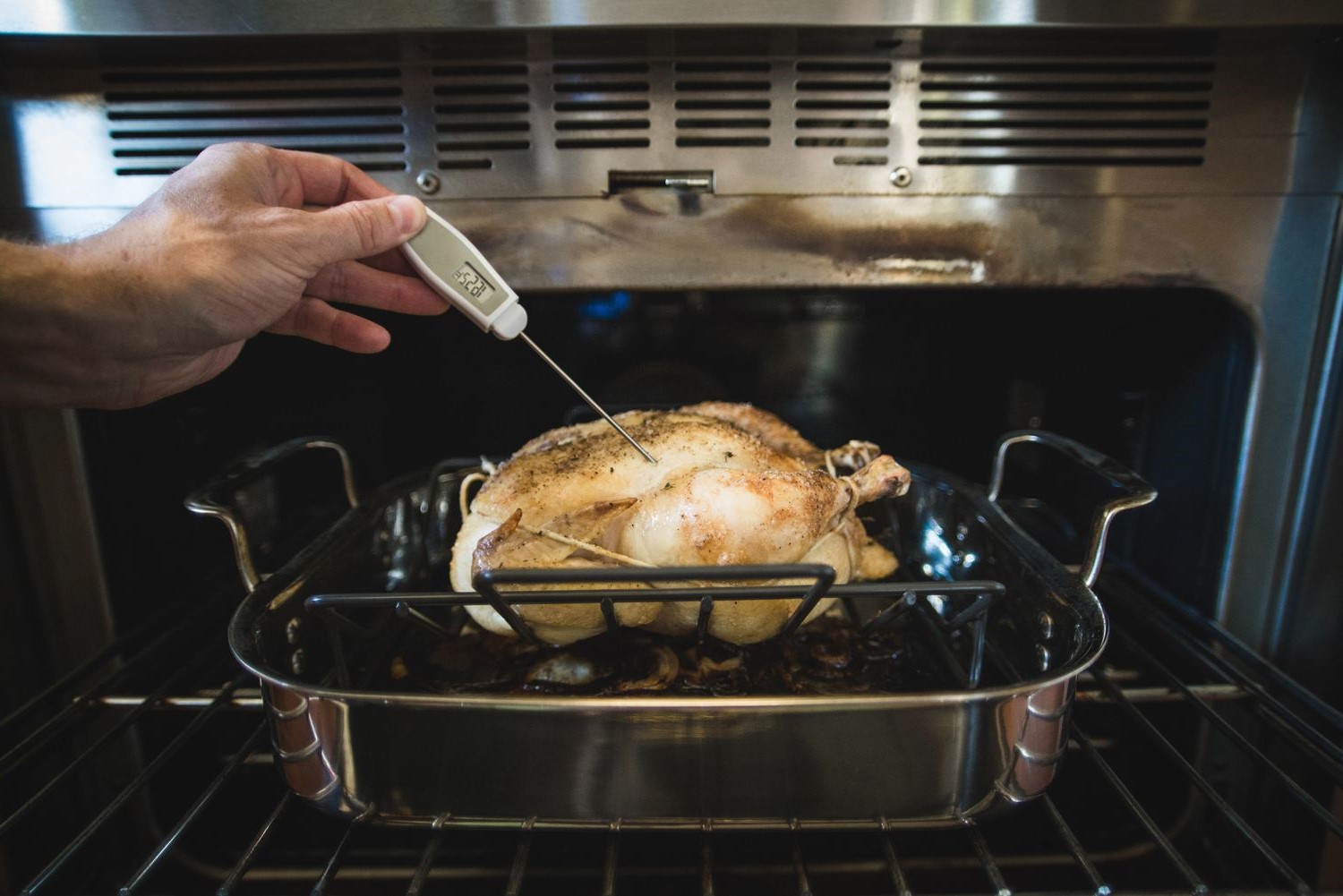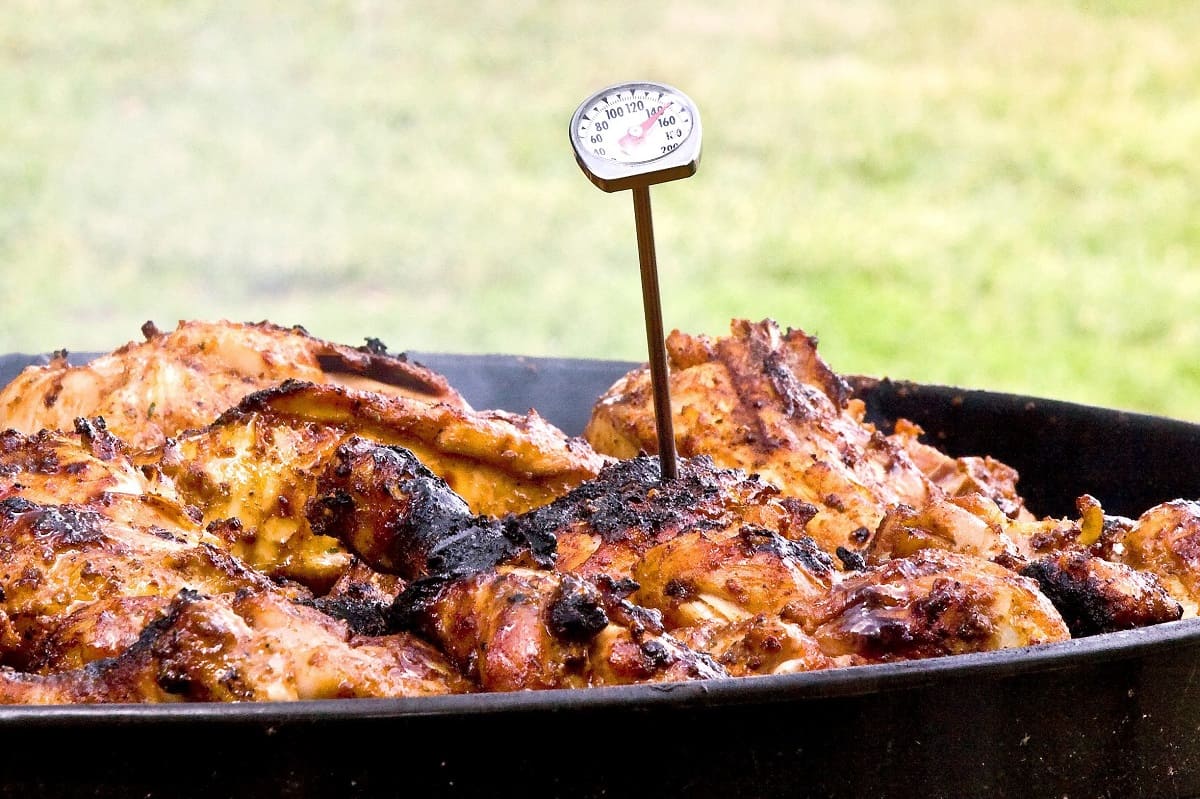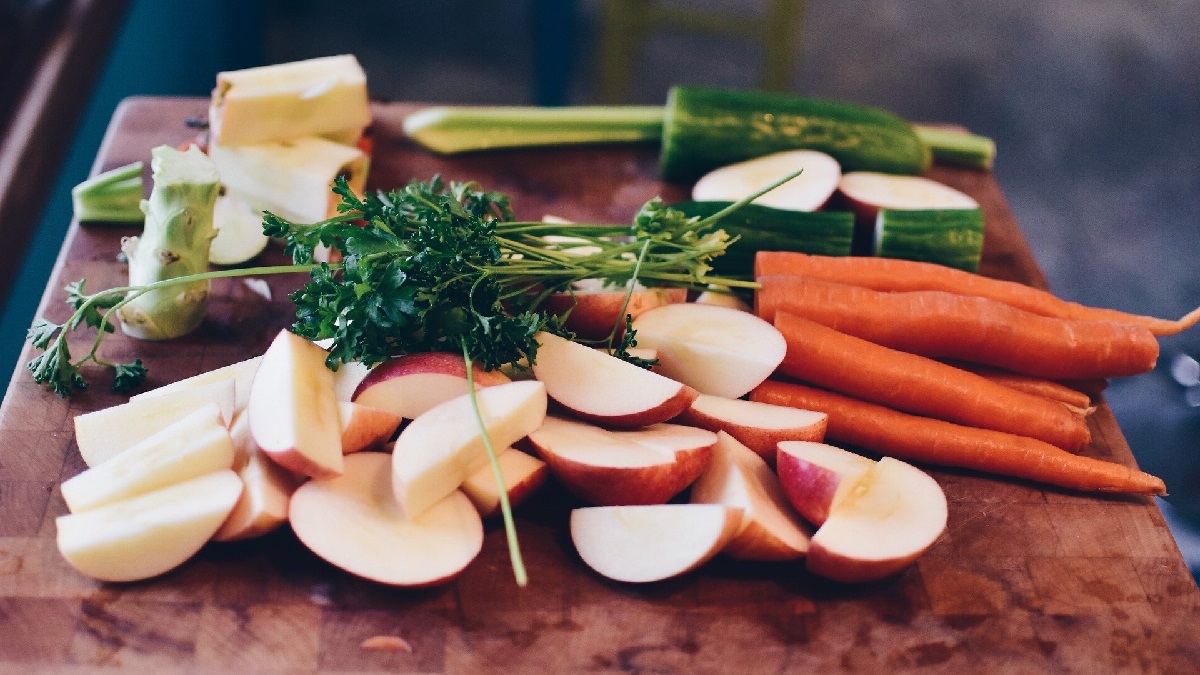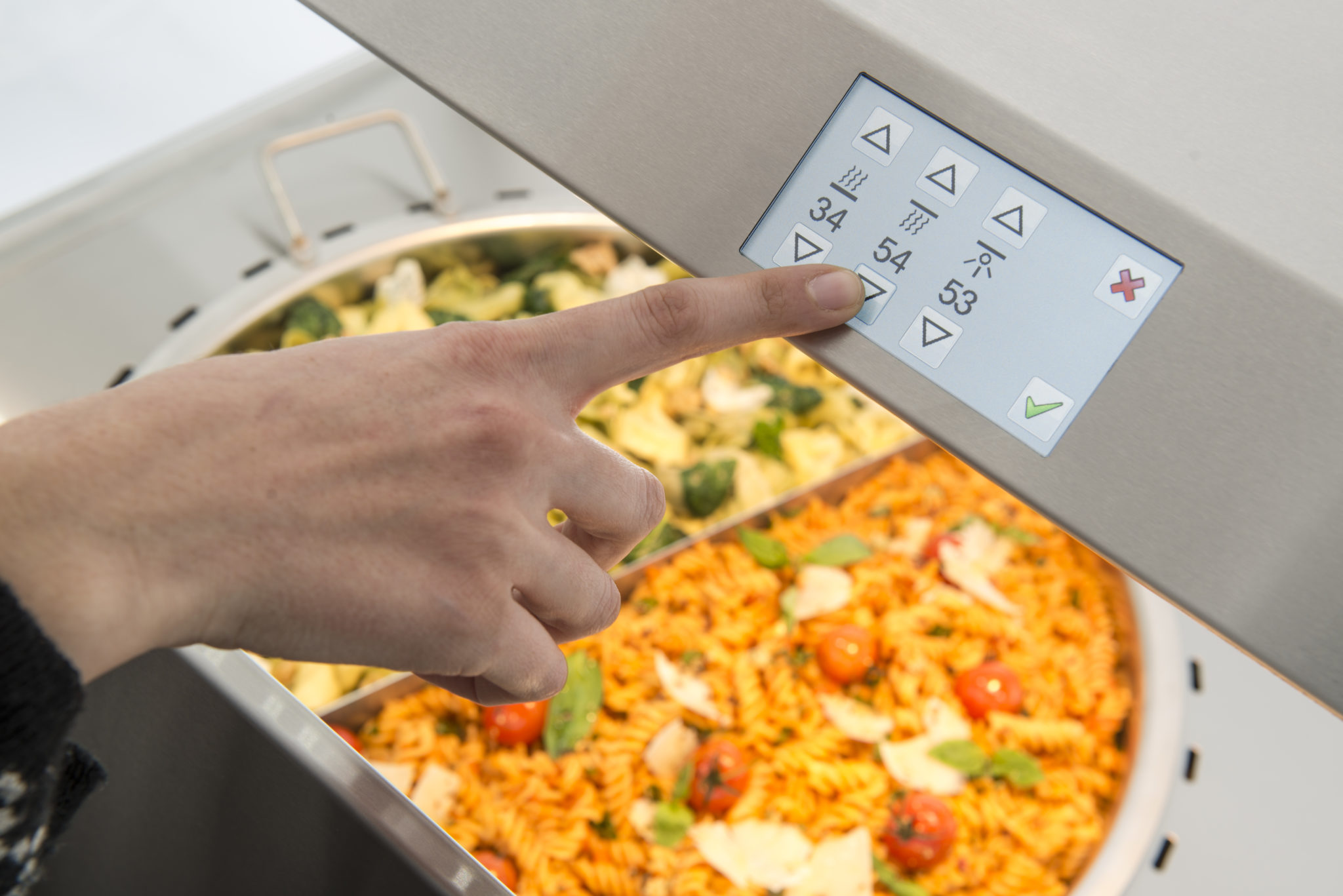Home>Culinary & Beverages>Food Contamination Associated With Undercooked Chicken
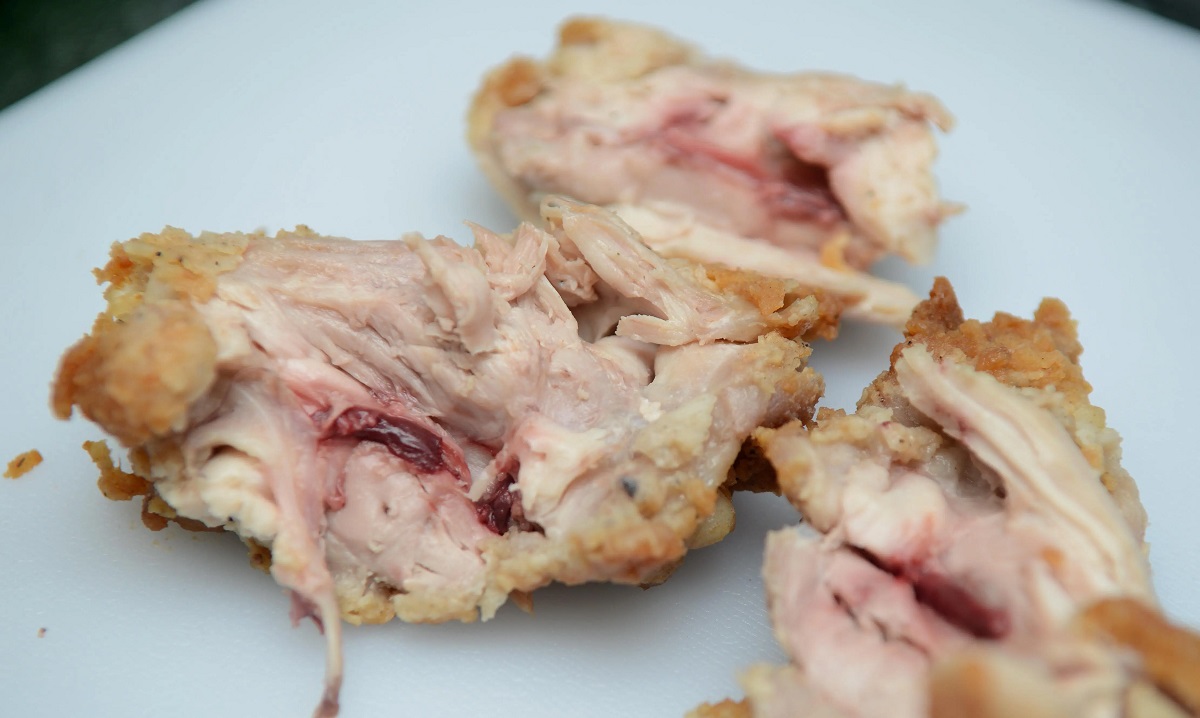

Culinary & Beverages
Food Contamination Associated With Undercooked Chicken
Published: February 21, 2024
Discover how undercooked chicken can lead to food contamination and learn how to prevent it. Explore culinary and beverage safety tips.
(Many of the links in this article redirect to a specific reviewed product. Your purchase of these products through affiliate links helps to generate commission for Temperatures.com, at no extra cost. Learn more)
Table of Contents
Introduction
Chicken is a versatile and popular protein enjoyed by people around the world. Whether it's grilled, roasted, or fried, chicken dishes are a staple in many cuisines. However, the improper handling and cooking of chicken can lead to food contamination, posing serious health risks. Understanding the potential dangers associated with undercooked chicken is crucial for both consumers and food preparers.
Food contamination from undercooked chicken can result from various factors, including improper storage, cross-contamination, and inadequate cooking temperatures. These issues can lead to the presence of harmful bacteria, such as Salmonella, Campylobacter, and E. coli, in the chicken. When consumed, these bacteria can cause foodborne illnesses, leading to symptoms like nausea, vomiting, diarrhea, and in severe cases, hospitalization.
It's essential for individuals to recognize the importance of proper food handling and cooking techniques when dealing with chicken. By doing so, they can minimize the risk of food contamination and safeguard their health. In the following sections, we will delve into the specific risks of consuming undercooked chicken, common types of food contamination in undercooked chicken, the health implications of food contamination, and effective strategies for preventing food contamination in chicken. Understanding these aspects will empower individuals to make informed decisions about food preparation and consumption, ultimately promoting a safer and healthier dining experience.
Risks of Consuming Undercooked Chicken
Consuming undercooked chicken poses significant risks to human health due to the potential presence of harmful bacteria and pathogens. When chicken is not cooked to the appropriate internal temperature, these microorganisms can survive and proliferate, leading to foodborne illnesses upon consumption. The risks associated with consuming undercooked chicken are multifaceted and can have serious implications for individuals' well-being.
One of the primary risks of consuming undercooked chicken is the potential exposure to Salmonella, a common bacterium found in poultry. Salmonella contamination can occur when chicken is not cooked thoroughly, allowing the bacteria to survive and cause infections in humans. Symptoms of Salmonella poisoning include abdominal cramps, diarrhea, fever, and vomiting, which can be particularly severe for vulnerable populations such as young children, the elderly, and individuals with weakened immune systems.
Additionally, undercooked chicken can harbor Campylobacter bacteria, another leading cause of foodborne illness. Campylobacteriosis, the infection caused by Campylobacter, can result in symptoms such as diarrhea, nausea, and abdominal pain. In some cases, the infection may lead to more severe complications, including reactive arthritis and Guillain-Barré syndrome, a rare but serious autoimmune condition.
Furthermore, the consumption of undercooked chicken increases the risk of exposure to Escherichia coli (E. coli) bacteria, which can lead to gastrointestinal distress and, in severe cases, kidney failure. E. coli contamination in chicken can occur due to cross-contamination during food preparation or inadequate cooking practices, highlighting the importance of proper hygiene and cooking techniques in minimizing these risks.
In addition to bacterial contamination, undercooked chicken may also harbor parasites such as Toxoplasma gondii and Cryptosporidium, which can cause parasitic infections in humans. These parasites can lead to flu-like symptoms, muscle aches, and in some cases, more severe health complications, particularly for individuals with compromised immune systems.
Overall, the risks of consuming undercooked chicken are substantial, encompassing the potential exposure to a range of harmful bacteria and pathogens that can cause foodborne illnesses. To mitigate these risks, it is imperative to ensure that chicken is cooked to the recommended internal temperature, thereby eliminating harmful microorganisms and safeguarding against the adverse health effects associated with food contamination.
Common Types of Food Contamination in Undercooked Chicken
Food contamination in undercooked chicken can stem from various sources, leading to the presence of harmful bacteria, pathogens, and parasites that pose significant health risks to consumers. Understanding the common types of food contamination in undercooked chicken is essential for identifying potential hazards and implementing effective preventive measures.
-
Bacterial Contamination: One of the primary types of food contamination in undercooked chicken is bacterial, with Salmonella and Campylobacter being the most prevalent culprits. These bacteria can infiltrate chicken during the rearing and processing stages, and if the chicken is not cooked to the recommended internal temperature, these pathogens can survive and cause foodborne illnesses upon consumption.
-
Cross-Contamination: Cross-contamination is another common source of food contamination in undercooked chicken. This occurs when raw chicken comes into contact with other foods, utensils, or surfaces, leading to the transfer of harmful bacteria. Improper handling practices during food preparation can exacerbate the risk of cross-contamination, underscoring the importance of maintaining strict hygiene and sanitation protocols in the kitchen.
-
Parasitic Infections: In addition to bacterial contamination, undercooked chicken can harbor parasites such as Toxoplasma gondii and Cryptosporidium. These parasites can infect humans upon consumption of contaminated chicken, leading to parasitic illnesses with symptoms ranging from mild discomfort to more severe health complications, particularly for individuals with weakened immune systems.
-
Inadequate Cooking Temperature: Failure to cook chicken to the appropriate internal temperature is a significant factor contributing to food contamination. Insufficient cooking can result in the survival of bacteria and pathogens in the chicken, increasing the likelihood of foodborne illnesses when consumed. Proper cooking techniques, including the use of food thermometers to ensure thorough cooking, are crucial for mitigating this risk.
-
Storage Conditions: Improper storage of chicken, particularly at temperatures that promote bacterial growth, can contribute to food contamination. Inadequate refrigeration or prolonged storage periods can create an environment conducive to bacterial proliferation, heightening the risk of contamination in undercooked chicken dishes.
Recognizing these common types of food contamination in undercooked chicken underscores the importance of implementing stringent food safety measures throughout the food supply chain and in domestic kitchens. By addressing these sources of contamination and adhering to best practices in food handling and preparation, individuals can minimize the risk of foodborne illnesses associated with undercooked chicken, promoting safer and healthier dining experiences.
Health Implications of Food Contamination from Undercooked Chicken
The health implications of food contamination from undercooked chicken are profound, encompassing a range of potential risks and adverse effects on human well-being. When individuals consume undercooked chicken contaminated with harmful bacteria, pathogens, or parasites, they are susceptible to developing foodborne illnesses that can lead to a spectrum of debilitating symptoms and, in severe cases, life-threatening complications.
One of the primary health implications of food contamination from undercooked chicken is the onset of foodborne infections caused by bacteria such as Salmonella and Campylobacter. These pathogens can trigger gastrointestinal distress, including symptoms such as nausea, vomiting, abdominal cramps, and diarrhea. The severity and duration of these symptoms can vary, with some individuals experiencing mild discomfort while others may endure prolonged and debilitating illness. Moreover, vulnerable populations, including young children, the elderly, and individuals with compromised immune systems, are at heightened risk of developing severe complications from these infections, underscoring the gravity of the health implications associated with undercooked chicken consumption.
In addition to bacterial contamination, undercooked chicken can harbor parasites such as Toxoplasma gondii and Cryptosporidium, which can lead to parasitic infections in humans. These infections can manifest as flu-like symptoms, muscle aches, and in some cases, more severe health complications, particularly for individuals with weakened immune systems. The impact of parasitic illnesses resulting from undercooked chicken consumption can be particularly distressing, as they can significantly impair individuals' overall health and well-being.
Furthermore, the health implications of food contamination from undercooked chicken extend beyond the immediate onset of symptoms. In some instances, foodborne illnesses stemming from undercooked chicken consumption can lead to long-term health consequences, including reactive arthritis, Guillain-Barré syndrome, and in severe cases, kidney failure. These complications can have a lasting impact on individuals' quality of life, highlighting the far-reaching implications of consuming undercooked chicken contaminated with harmful microorganisms.
Overall, the health implications of food contamination from undercooked chicken are substantial, encompassing the potential for a wide array of foodborne infections, parasitic illnesses, and long-term health complications. By understanding these implications, individuals can recognize the critical importance of proper food handling and cooking practices in mitigating the risks associated with undercooked chicken consumption, ultimately promoting safer and healthier dining experiences.
Preventing Food Contamination in Chicken
Preventing food contamination in chicken is paramount to ensuring the safety and well-being of consumers. By implementing rigorous food safety measures and adhering to best practices in food handling, storage, and cooking, individuals can minimize the risk of foodborne illnesses associated with chicken consumption. Here are essential strategies for preventing food contamination in chicken:
-
Proper Storage: Store raw chicken at temperatures below 40°F (4°C) to inhibit bacterial growth. Use a refrigerator thermometer to monitor the temperature and ensure that the chicken is stored in airtight containers to prevent cross-contamination with other foods.
-
Prevent Cross-Contamination: Keep raw chicken separate from other foods, especially those that are consumed raw. Use separate cutting boards, utensils, and countertops for raw chicken to prevent the spread of harmful bacteria. Thoroughly clean and sanitize all surfaces and utensils that come into contact with raw chicken.
-
Thorough Cooking: Cook chicken to the recommended internal temperature of 165°F (74°C) to ensure that harmful bacteria, such as Salmonella and Campylobacter, are effectively eliminated. Use a food thermometer to verify the internal temperature of the chicken, particularly in thick portions.
-
Hand Hygiene: Practice proper handwashing before and after handling raw chicken to prevent the spread of bacteria. Use warm water and soap, and scrub hands for at least 20 seconds. Additionally, avoid touching ready-to-eat foods after handling raw chicken without washing hands thoroughly.
-
Avoid Cross-Contamination During Shopping: When purchasing chicken, ensure that it is packaged securely and placed in a separate bag to prevent leakage and cross-contamination with other grocery items. Promptly refrigerate the chicken upon returning home to maintain its freshness and safety.
-
Educate Food Handlers: For individuals involved in food preparation and handling in commercial settings, comprehensive training on food safety protocols is essential. This includes proper sanitation practices, temperature control, and the prevention of cross-contamination to uphold stringent food safety standards.
-
Regular Equipment Maintenance: Ensure that kitchen equipment, such as refrigerators and food thermometers, is regularly inspected and maintained to guarantee accurate temperature control and monitoring. Malfunctioning equipment can compromise food safety and contribute to food contamination.
By diligently adhering to these preventive measures, individuals can significantly reduce the risk of food contamination in chicken, thereby promoting safer and healthier dining experiences for themselves and their families. Prioritizing food safety not only safeguards against foodborne illnesses but also fosters a culture of responsible food handling and consumption, ultimately contributing to the well-being of consumers.

